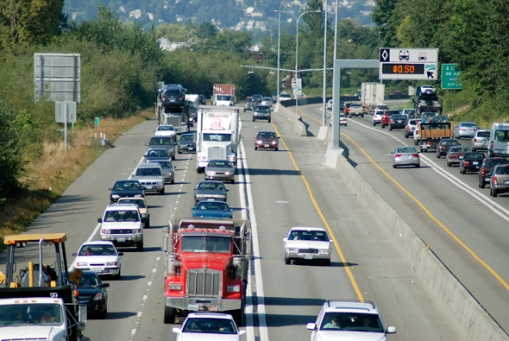USA Today wrote in September that the percentange of people driving alone to work dropped from 76% to 75.5%. In addition, the paper reported that the number of households with one or zero cars rose from 41.8% to 42.2%. Both of these may be consequences of the recession, with people cutting back on costs all around. Given that transportation is an American family’s second largest cost after housing, on average, makes it no surprise that some people are cutting back where they can.
If the government wants to capitalize on these trends, and battle the conspicuous consumerism and misguided dependence on the automobile that has led this country to own almost as many cars as people that live here it must not only fund transit, but stop subsidizing both cars and parking so much. Streetsblog effectively exposed how much the government subsidizes parking rather than transit:
But the subsidy debate often overlooks the government tax exemption for workers’ parking expenses. And federal parking subsidies are skyrocketing, as Subsidyscope revealed yesterday in its data-packed report on U.S. transport spending: the value of tax-free parking will reach $3 billion this year, compared with $500 million in subsidies for transit use.
The imbalance might be corrected if the government treated parking and transit equally when it came to tax benefits. Workers can write off a maximum of slightly more than $200 in monthly parking benefits, while the maximum tax-free value of transit passes is about $100 less per month.
All of this contributes to why I was not so upset when Detroit began faltering last year. I have the utmost sympathy for those who have lost their jobs, but I have little love for America’s obsession with driving, especially driving alone. The government could do a lot to encourage people to drive less to work alone.
Transit cannot be built overnight and is expensive to operate and build. However, the government can encourage people to commute together, and not just through HOV and HOT lanes. The subsidy for parking should be done away with or reduced such that people are given greater reason to commute with neighbors, friends and coworkers.
Moreover, while new transit systems, especially rail-based systems require radical infrastructure investments, park & ride systems or other bus systems that travel on existing routes can be immensely effective. If the parking subsidy were transferred to park & ride subsidies such that people could still take the highway it would be effective. In fact, if current HOT and HOV lanes were reserved only for public transit buses those who took public transit would actually get to work more quickly!
Americans need cars, but they don’t need multiple of them and they do not need to drive them alone every day. The recession is an opportunity to mold transit habits while people are willing to make changes.

